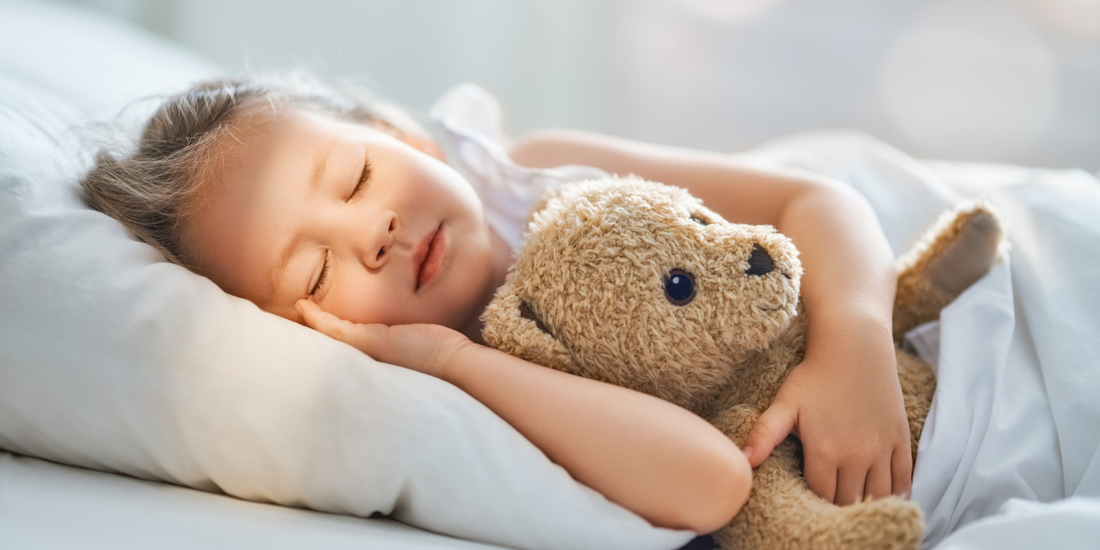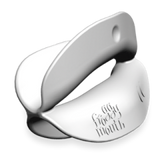
Sleep-disordered breathing negatively impacts child development: yes, no, maybe?

Prof. Dr. K. Spruyt
A CHILD'S POOR SLEEP IS A COMMON CONCERN FOR PARENTS. IN OTHER WORDS, THE LITERATURE REPORTS PREVALENCE RATES OF SLEEP DISORDERS IN CHILDREN RANGING FROM 20 TO 60% OR MORE, ESPECIALLY IN CHILDREN WITH ATYPICAL DEVELOPMENT (E.G., DOWN SYNDROME).1-3
Let's now talk about a significant sleep problem: sleep-disordered breathing. Breathing is a complex physiological process that begins in utero with the respiratory movements of the fetus.
The control of ventilation (respiratory centers of the brainstem) depends on the input from chemoreceptors, motor input (for example, the movement of our chest) and behavioral input (for example, holding your breath when you dive).
We will focus on the symptoms of primary snoring, mouth breathing, breathing interruption (hypopnea) and cessation of breathing (apnea) during sleep.4
Based on polysomnography studies, the severity of sleep-disordered breathing is measured.5 Obstructive sleep apnea, for example, is very common, affecting 2 to 3% of all children.6-8 Note that, the most important function of breathing is the supply of oxygen to the body and the balancing of carbon dioxide levels.
Consequently, we can distinguish some breathing difficulties: obstructive apnea, central apnea, mixed apnea, periodic breathing.
Clinically, the most commonly used indicator of airway obstruction is the apnea-hypopnea index (AHI).
It was created by Dr. Christian Guilleminault, a French doctor. But there are different indexes, e.g., hypercapnia or arousal.
In summary, it is the degree of airway obstruction that will define the spectrum of sleep-disordered breathing.4,6,11,12
Moreover, sleep-disordered breathing has multiple additional comorbidities such as obesity or metabolic syndrome.4,9,10 Recent studies progressively reveal furthermore the multidirectional relationships between sleep-disordered breathing and a child's development.
The assessment of the impact of sleep-disordered breathing on child development,13-22 shows that the most frequently reported is metabolic syndrome.
In children, we see: stunted growth, childhood obesity, inflammatory disorders, cardiovascular consequences.
Regarding the impact of sleep-disordered breathing in the areas,23-28 of intelligence, schooling, attention, executive function, memory, language, and visuospatial ability, it was mainly studies including primary snoring or different AHI indices.
Incorporating the spectrum, the studies suggest general intellectual problems and memory issues, especially for school-age children, while younger children may present attention issues.
Thus, they exhibit average to poor performances. Translated to their main development task - academic achievement, we have shown through a meta-analysis that they underperform at all academic levels.
Studies show that behavioral problems are common and can be of internalized or Prof. Dr. Karen Spruyt University of Paris, NeuroDiderot INSERM externalized type.
It is also important to note that in children with intellectual/developmental disabilities, their behavior and performances could be doubly affected by this sleep problem.
These children are often described as resembling ADHD. These are the children in class that you can describe as the child with a "slow cognitive rhythm".
In conclusion, studies support that sleep-disordered breathing presents an increased risk for the health of the young, and the less young.
Bibliographie :
1. Spruyt K, O'Brien LM, Cluydts R, Verleye GB, Ferri R. Odds. prevalence and predictors of sleep problems in school-age normal children. J Sleep Res 2005; 14(2): 163-76.2. Owens J. Classification and epidemiology of childhood sleep disorders. Primary care 2008; 35(3): 533-46, vii.
3. Tietze AL, Blankenburg M, Hechler T, et al. Sleep disturbances in children with multiple disabilities. Sleep medicine reviews 2012; 16(2): 117-27.
5. Malhotra RK, Kirsch DB, Kristo DA, et al. Polysomnography for Obstructive Sleep Apnea Should Include Arousal-Based Scoring: An American Academy of Sleep Medicine Position Statement. Journal of clinical sleep medicine : JCSM : official publication of the American Academy of Sleep Medicine 2018; 14(7): 1245-7.
6. Leung TN, Cheng JW, Chan AK. Paediatrics: how to manage obstructive sleep apnoea syndrome. Drugs in context 2021; 10.
7. Marcus CL, Brooks LJ, Draper KA, et al. Diagnosis and management of childhood obstructive sleep apnea syndrome. Pediatrics 2012; 130(3): e714-55.
8. Marcus CL, Brooks LJ, Draper KA, et al. Diagnosis and management of childhood obstructive sleep apnea syndrome. Pediatrics 2012; 130(3): 576-84.
9. Spruyt K, Serpero LD, Capdevila OS, Kheirandish-Gozal L, Gozal D. Ghrelin and visfatin plasma levels in obese and non-obese school-aged children with and without obstructive sleep apnea. Sleep 2008; 31: A76-A.
10. Gozal LK, Hegazi M, Khalyfa A, et al. Obstructive Sleep Apnea, Insulin Resistance, and Fabp4 Plasma Levels in Children. Sleep 2010; 33: A331-A.
11. Spruyt K, Gozal D. Screening of pediatric sleep-disordered breathing: a proposed unbiased discriminative set of questions using clinical severity scales. Chest 2012; 142(6): p. 1508-15.
12. Spruyt K, Verleye G, Gozal D. Unbiased categorical classification of pediatric sleep disordered breathing. Sleep 2010; 33(10): p.1341-7.
13. Cappuccio F, Miller MA, Lockley SW. Sleep, health, and society : from aetiology to public health. Oxford; New York: Oxford University Press; 2010.
14. Gozal D, Kheirandish-Gozal L, Bhattacharjee R, Spruyt K. Neurocognitive and endothelial dysfunction in children with obstructive sleep apnea. Pediatrics 2010; 126(5): p. 1161-7.
15. Gozal D, Spruyt K, Capdevila OS, Kheirandish-Gozal L, Boazza M, Khalyfa A. Cognitive Deficits in Children with Obstructive Sleep Apnea (Osa) and Apolipoprotein E (Apoe) Single Nucleotide Polymorphisms. Sleep 2009; 32: A65-A.
16. Honaker SM, Gozal D, Bennett J, Capdevila OS, Spruyt K. Sleep-disordered breathing and verbal skills in school-aged community children. Dev Neuropsychol 2009; 34(5): p. 588-600.
17. Kheirandish-Gozal L, De Jong MR, Spruyt K, Chamuleau SA, Gozal D. Obstructive sleep apnoea is associated with impaired pictorial memory task acquisition and retention in children. The European respiratory journal 2010; 36(1): p. 164-9.
19. Spruyt K, Sans Capdevila O, Serpero LD, Kheirandish-Gozal L, Gozal D. Dietary and physical activity patterns in children with obstructive sleep apnea. J Pediatr 2010; 156(5): p. 724-30, 30 e1-30 e3.
20. Da Silva Gusmao Cardoso T, Pompeia S, Miranda MC. Cognitive and behavioral effects of obstructive sleep apnea syndrome in children: a systematic literature review. Sleep medicine 2018; 46: p. 46-55.
21. Spruyt K, Molfese DL, Gozal D. Sleep duration, sleep regularity, body weight, and metabolic homeostasis in school-aged children. Pediatrics 2011; 127(2): p. e345-52.
22. Mietchen JJ, Bennett DP, Huff T, Hedges DW, Gale SD. Executive Function in Pediatric Sleep-Disordered Breathing: A Meta-analysis. Journal of the International Neuropsychological Society : JINS 2016; 22(8): p. 839-50.
23. Spruyt K, Gozal D. The underlying interactome of childhood obesity: the potential role of sleep. Child Obes 2012; 8(1): p. 38-42.
24. Hsu B, Emperumal CP, Grbach VX, Padilla M, Enciso R. Effects of respiratory muscle therapy on obstructive sleep apnea: a systematic review and meta-analysis. Journal of clinical sleep medicine : JCSM : official publication of the American Academy of Sleep Medicine 2020; 16(5): p. 785-801.
25. Rueda JR, Mugueta-Aguinaga I, Vilaró J, Rueda-Etxebarria M. Myofunctional therapy (oropharyngeal exercises) for obstructive sleep apnoea. The Cochrane database of systematic reviews 2020; 11(11): Cd013449.
26. Bandyopadhyay A, Kaneshiro K, Camacho M. Effect of myofunctional therapy on children with obstructive sleep apnea: a meta-analysis. Sleep medicine 2020; 75: p. 210-7.
27. Bhattacharjee R. Adherence to Sleep Therapies in Children and Adolescents. Sleep medicine clinics 2021; 16(1): p. 11-21.
28. Bohr C, Shermetaro C. Tonsillectomy and Adenoidectomy. StatPearls. Treasure Island (FL); 2021.





